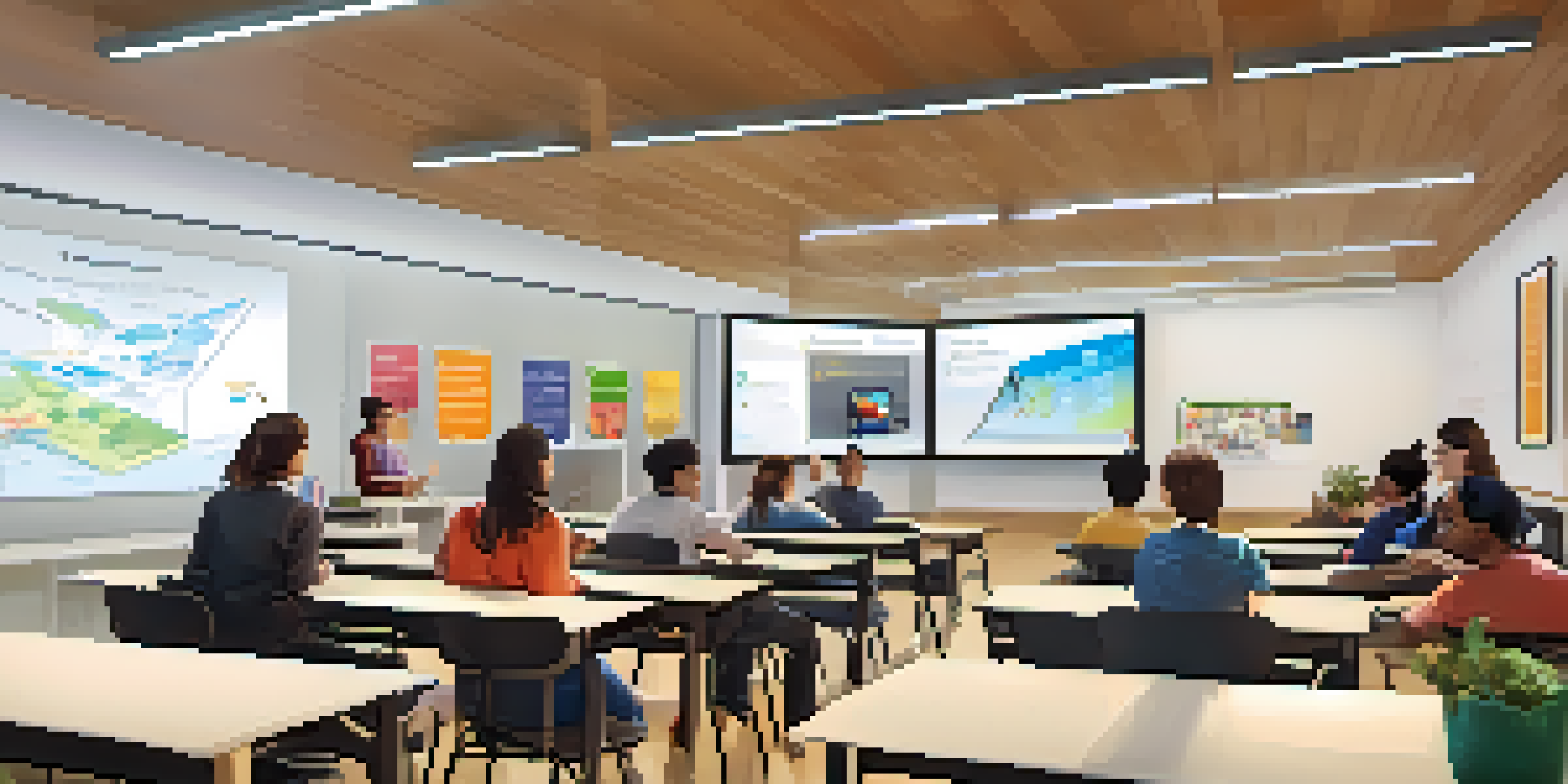Creating Interactive Content for Adaptive Learning Platforms

Understanding Adaptive Learning and Its Importance
Adaptive learning is a personalized educational approach that tailors content to meet individual learner needs. Unlike traditional methods, which apply a one-size-fits-all strategy, adaptive learning platforms analyze student performance in real-time. This allows for adjustments in difficulty and topic coverage, ensuring that each learner progresses at their own pace.
Adaptive learning is not just about technology; it's about understanding the learner's needs and adapting the content accordingly.
The significance of adaptive learning lies in its ability to enhance engagement and retention. By providing materials that resonate with a learner’s unique strengths and weaknesses, students are more likely to remain motivated. With the right interactive content, these platforms can transform the learning experience into something dynamic and enjoyable.
Moreover, adaptive learning helps educators identify knowledge gaps and adjust their teaching strategies accordingly. This ensures that both students and teachers are on the same page, fostering a collaborative learning environment. As a result, the educational process becomes more effective and personalized.
Types of Interactive Content for Learning
Interactive content can take many forms, including quizzes, simulations, and videos that allow for user engagement. Quizzes, for example, can provide immediate feedback, helping students understand their progress. Simulations can recreate real-world scenarios, giving learners a hands-on experience that enhances comprehension.

Another popular type of interactive content is gamification, which incorporates game-like elements into the learning process. By adding points, badges, or leaderboards, educators can motivate students to engage more deeply with the material. This approach not only makes learning fun but also encourages healthy competition among peers.
Personalized Learning Enhances Engagement
Adaptive learning tailors educational content to individual needs, significantly increasing student motivation and retention.
Finally, collaborative tools like discussion boards and peer reviews foster interaction among learners. By allowing students to share insights and feedback, these platforms build a sense of community. This social aspect of learning is essential for motivation and can lead to improved outcomes.
Designing User-Friendly Interactive Elements
Creating user-friendly interactive content begins with understanding your audience. Knowing their preferences, challenges, and technological proficiency can guide your design choices. Intuitive navigation and a clean layout are crucial in ensuring that learners can focus on the content rather than getting lost in complicated interfaces.
The future of education is not a one-size-fits-all model; it’s a personalized journey that adapts to each learner's pace and style.
Additionally, visual elements such as infographics and animations can significantly enhance understanding. These tools break down complex information into digestible pieces, making learning more accessible. It’s important to balance text, visuals, and interactive elements to maintain engagement without overwhelming users.
Lastly, accessibility should be a top priority in your design process. By incorporating features like screen readers and adjustable text sizes, you ensure that all learners can access the content. This inclusivity not only broadens your audience but also aligns with best practices in educational design.
Incorporating Feedback Loops into Interactive Content
Feedback loops are vital in adaptive learning, as they inform both learners and educators about progress. By integrating quizzes or reflection prompts after lessons, learners receive immediate insights into their understanding. This timely feedback can help them identify areas for improvement and reinforce their knowledge.
Moreover, incorporating analytics tools into your platform can provide deeper insights into learner behavior. Educators can track which areas students struggle with the most, allowing for targeted interventions. This data-driven approach fosters a more effective learning environment tailored to specific needs.
Interactive Content Boosts Understanding
Utilizing quizzes, simulations, and gamification makes learning more engaging and allows for hands-on experiences.
Additionally, it’s important to encourage learners to give feedback on interactive content. This can be achieved through surveys or suggestion boxes integrated into the platform. Listening to user experiences and preferences helps in refining content and improving engagement over time.
Leveraging Technology to Enhance Interactivity
Technology plays a pivotal role in creating interactive content for adaptive learning. Tools like augmented reality (AR) and virtual reality (VR) offer immersive experiences that can significantly enhance engagement. These technologies allow learners to explore complex concepts in a 3D environment, making learning more memorable and impactful.
Mobile applications are another avenue to consider when designing interactive content. With the increasing use of smartphones and tablets, learners can access educational materials anytime, anywhere. This flexibility caters to diverse learning styles and schedules, making it easier for students to engage with the content.
Moreover, artificial intelligence (AI) can personalize learning experiences even further. AI algorithms can analyze learner data to recommend customized resources, ensuring each student receives the support they need. This technology empowers educators to focus on teaching while technology handles the personalization.
Creating Collaborative Learning Experiences
Collaboration is essential in adaptive learning, as it allows students to learn from one another. Interactive content can facilitate group projects, discussions, and peer assessments, fostering a sense of community. When learners collaborate, they can share different perspectives and insights, enriching the overall educational experience.
Online forums and chat features are great ways to encourage interaction among students. These tools allow learners to ask questions, share resources, and support each other outside of the traditional classroom setting. This continuous engagement enhances understanding and helps build relationships among peers.
Collaboration Fosters Community Learning
Collaborative tools enable students to share insights and work together, enriching the educational experience and developing essential skills.
Furthermore, collaborative projects can enhance critical thinking and problem-solving skills. By working together to tackle real-world problems, students not only learn content but also develop essential skills they will need in their future careers. This holistic approach to learning prepares them for success beyond the classroom.
Evaluating the Effectiveness of Interactive Content
Evaluating the effectiveness of interactive content is crucial to ensure it meets learning objectives. This can be done through assessments, surveys, and performance analytics that track student progress. Regular evaluation helps identify strengths and weaknesses in your content, allowing for necessary adjustments.
Additionally, gathering feedback from both students and educators provides valuable insights into user experience. Understanding what works and what doesn’t can inform future content creation strategies. This iterative process fosters continuous improvement, ensuring that the interactive content remains relevant and engaging.

Finally, measuring engagement metrics such as time spent on tasks or completion rates can offer a clearer picture of effectiveness. By analyzing these metrics, educators can determine whether the content is achieving desired outcomes. This focus on evaluation ultimately enhances the quality of the learning experience.